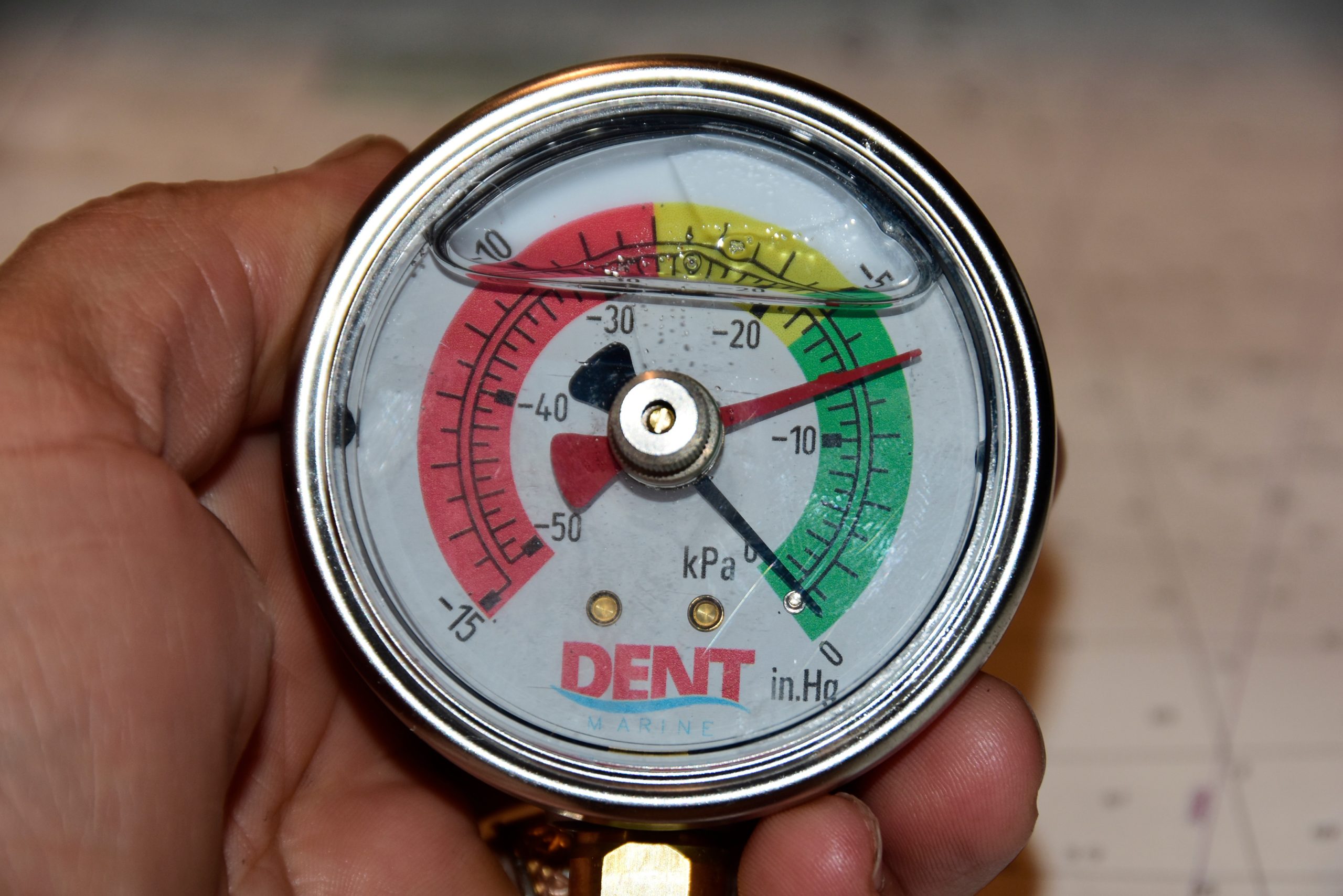Text and photos © 2020 Steve D’Antonio Marine Consulting, Inc.
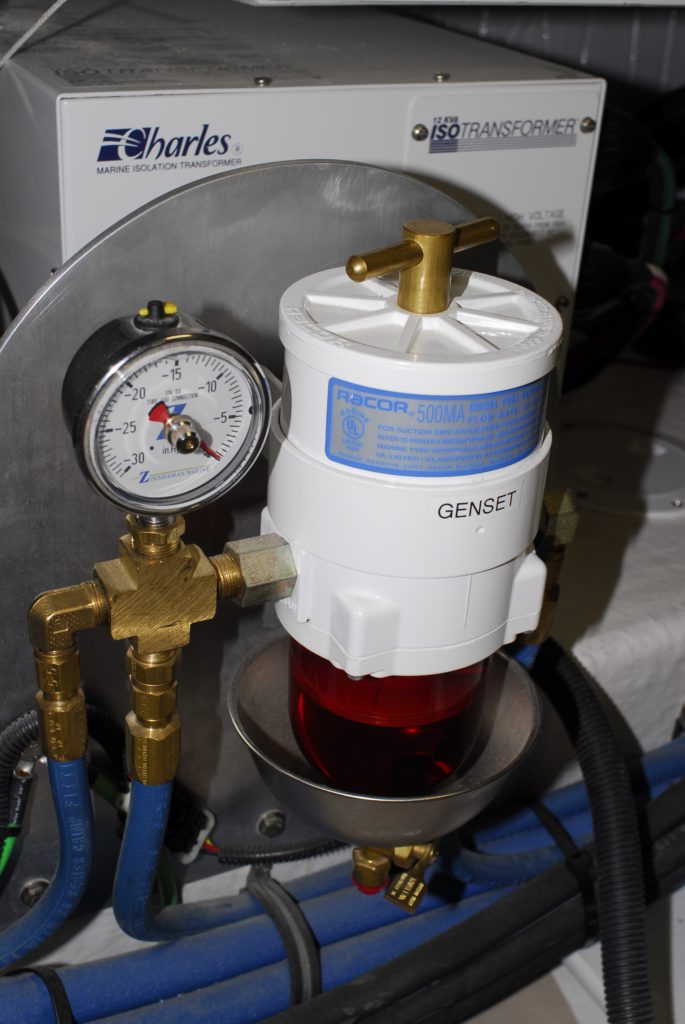
Primary fuel filter vacuum gauges provide the only accurate means of measuring fuel flow restriction. The arrangement shown here, with the gauge permanently plumbed to the outlet plumbing, represents the preferred approach.
It’s a truism; you can’t change your fuel filter too frequently. While it may be wasteful, filters cost money and old ones simply end up in rubbish heaps or landfills, there’s no harm in making sure the diesel fuel coursing through your engine’s fuel injection system is as fresh and clean and as it can be. Or is there? Filters, especially those used for air and fuel, can in fact suffer from being replaced too frequently. Indeed, as difficult as that concept may be to believe, the least efficient time in most filters’ lives is when they are new. As a filter begins to capture contaminants it becomes more efficient at the process. The bits of belt dust and acoustic insulation that become lodged in paper air filter elements for instance improve the filter’s ability to capture new debris and contaminants as they pass through the filter media. Likewise for fuel filter elements, as the element begins to capture the first bits of asphaltine, rubber hose particles and rust from steel tanks, it becomes more efficient at capturing still more of this and other contaminants.
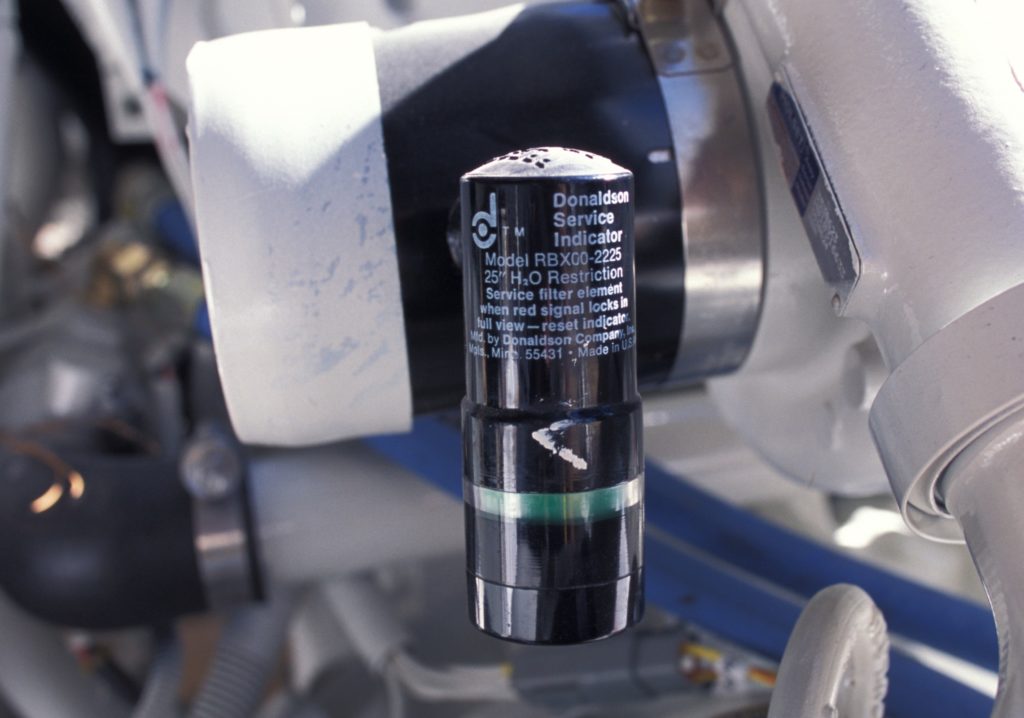
A stock air filter telltale vacuum indicator. Not really a gauge per se, more of an “idiot light”, it will show red when the filter is restricted.
The key to taking advantage of this not too frequent replacement of filters approach is anything but seat of the pants engineering. There’s no way to know how contaminated or impacted your fuel and air filters are unless you utilize a measurement device or tool.
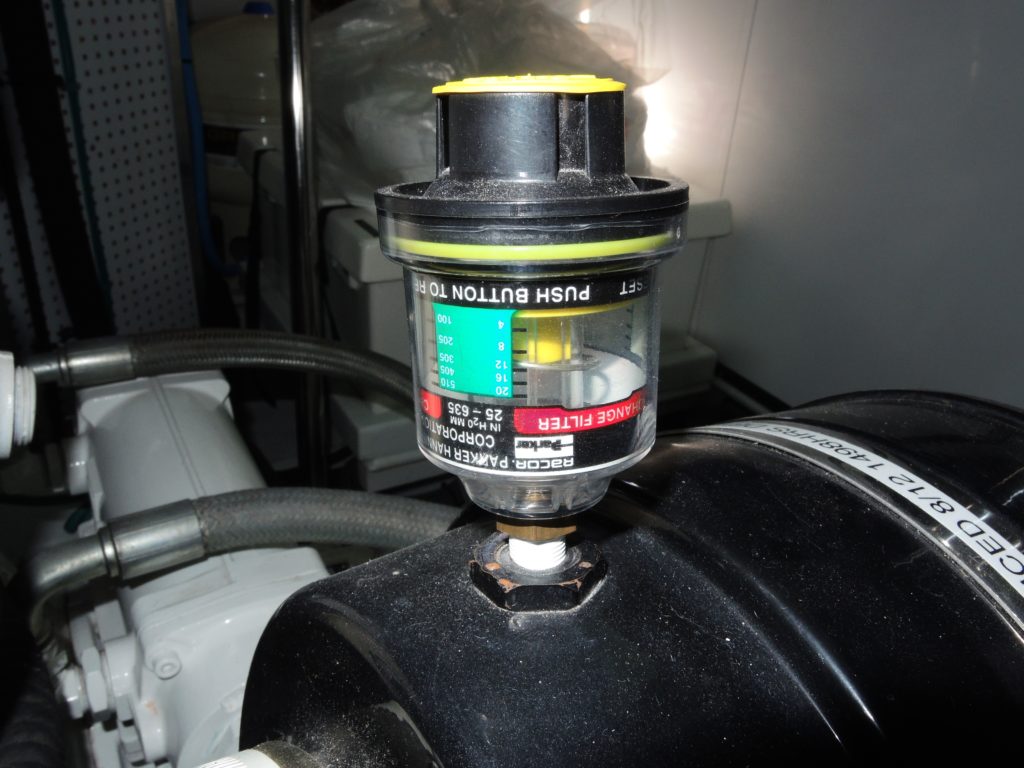
This air filter vacuum indicator gauge is clearly graduated, allowing the user to monitor progressive restriction, and providing ample warning for replacement.
For air filters a vacuum measurement device can easily be installed on the clean air side of the filter element, i.e. between the air filter element and the engine intake manifold. Many larger diesel engines supply these as standard equipment, however, they are frequently excluded from smaller engines and auxiliaries. I’ve used air filter monitors from a company called Engineered Products, manufacturers of the Filter Minder. These are designed for aftermarket installation using nothing more than a stepped drill bit. The graduated scale on the monitor will measure and retain the highest vacuum reading, typically in inches of H20, enabling the user to determine, at a glance, whether the engine is running or not, the condition of the air filter element. Air intake vacuum thresholds vary from engine manufacturer to engine manufacturer, however, typically, anything over about 23 inches of H20 is considered ample reason to replace the element.
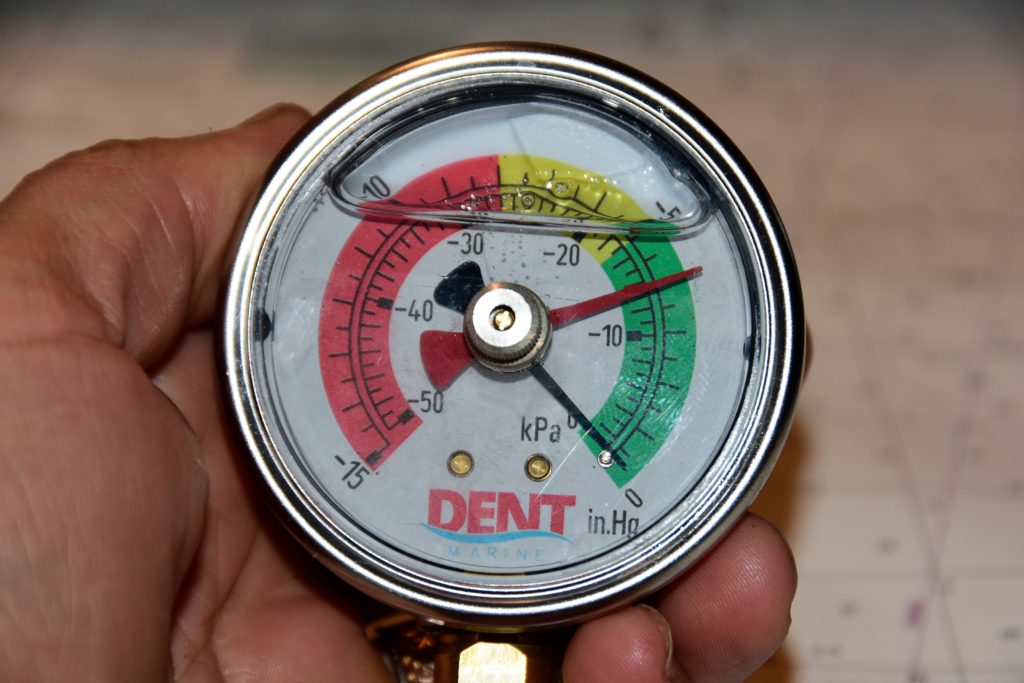
With its liquid-filled case to resist vibration, and a larger scale (representing a smaller and thus more accurate range), this fuel filter vacuum gauge represents the state of the art.
Primary fuel filter monitors work in much the same way. Installed between the filter and the engine or its lift pump, they monitor the vacuum created on the “clean” side of the filter element (I use the Dent Gauge, with its expanded short range scale and liquid-filled housing, it’s rugged and reliable). If the vacuum is low, less than about 5 inches of mercury, then there’s no need to replace the filter. Higher vacuum readings, on the other hand, indicate a filter that’s done its job and is in need of relief. It’s important to remember, fuel filter vacuum reading must either be taken while the engine is at cruising rpm or by using a recording vacuum gauge, one that utilizes a re-settable drag needle that maintains the highest vacuum reading for later observation, even when the engine is not running. Ideally, vacuum gauges installed on primary filters should not be the variety that replaces the T handle. Instead, they should be permanently installed on the filter outlet plumbing to retain the ease of service and avoid damage to the gauge when the filter element is replaced. Ultimately, even if your vacuum readings remain low, you should plan on filter replacement after two years.

